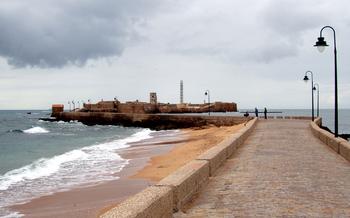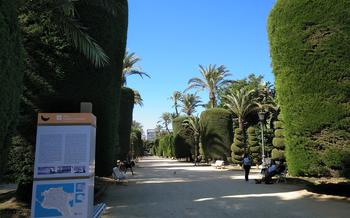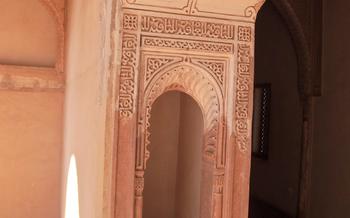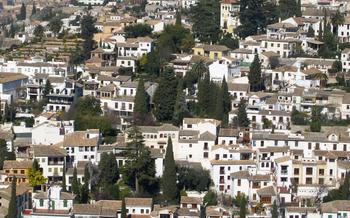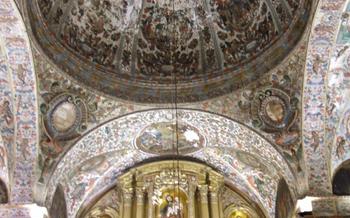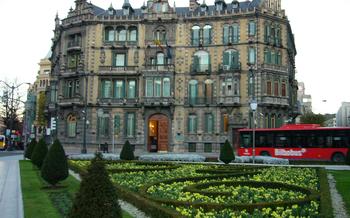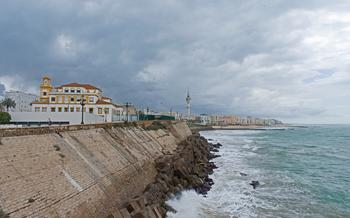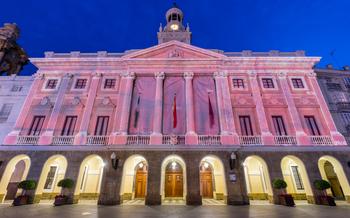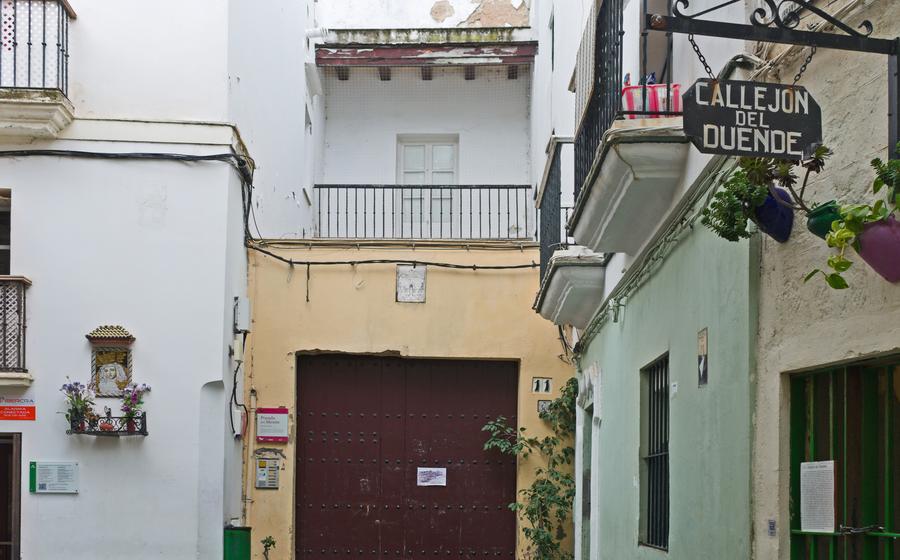
San Felipe Neri Oratory Museum
- Historical Background
- Location and Accessibility
- Opening Hours and Admission
- Highlights of the Oratory Museum
- Guided Tours and Audio Guides
- Best Time to Visit
- Photography and Videography
- Additional Facilities and Services
- Cultural Significance
- Restoration and Preservation
- Educational Programs and Workshops
- Nearby Attractions
- Accessibility for Visitors with Disabilities
- Local Cuisine and Dining Options
- Insider Tip:
Historical Background
Standing as a testament to Cádiz's rich past, the San Felipe Neri Oratory holds a significant place in the city's religious and cultural heritage. Built in the 17th century, during the height of the Spanish Baroque period, the oratory served as a place of worship for the Oratorian Congregation of Saint Philip Neri. Its construction reflects the city's economic prosperity and artistic flourishing during that era.
The oratory boasts a unique architectural style, blending elements of Baroque and Neoclassical design. Its façade showcases intricate carvings and sculptures, while the interior features a spacious nave adorned with elegant columns, arches, and elaborate plasterwork. The oratory is renowned for its stunning altarpiece, a masterpiece of Baroque art, showcasing intricate carvings, vibrant colors, and life-size sculptures that depict scenes from the life of Saint Philip Neri, the patron saint of the oratory.
Location and Accessibility
The San Felipe Neri Oratory Museum is conveniently located in the heart of Cádiz's historic center, at Calle San José, 115001 Cádiz, Spain. To reach the oratory, visitors can take a leisurely stroll through the charming streets of Cádiz, admiring the city's iconic architecture and vibrant atmosphere. Alternatively, several public transportation options are available, including buses and taxis, which can drop visitors off within a short walking distance of the oratory. For those arriving by car, limited street parking is available in the surrounding area, but it is advisable to plan accordingly as parking spaces can be limited. The oratory is wheelchair accessible, with ramps and elevators providing easy access to all levels of the building, ensuring an inclusive experience for visitors with disabilities.
Opening Hours and Admission
The San Felipe Neri Oratory Museum welcomes visitors with open arms during specific hours to allow for both exploration and appreciation of its sacred treasures. Its doors are open from Tuesday to Sunday, granting the public access to its captivating displays. However, it remains closed on Mondays, providing a day of respite for its dedicated staff to prepare for the week ahead.
To fully immerse yourself in the oratory's rich history and artistic wonders, a modest admission fee is required. This fee contributes to the preservation and maintenance of this remarkable site, ensuring its continued existence for generations to come. However, students, seniors, and families are eligible for discounted rates, making this cultural experience accessible to all.
For those who prefer to plan ahead, advance ticket purchases are available, guaranteeing entry and eliminating the need to wait in line. Additionally, group discounts are offered for those who wish to share this journey with friends or fellow travelers. Explore the depths of this sacred space, where art, history, and spirituality converge, creating an unforgettable encounter.
Highlights of the Oratory Museum
The San Felipe Neri Oratory Museum boasts a wealth of captivating exhibits that showcase the artistry, religious devotion, and historical significance of the site. Among the must-see attractions are the stunning altarpiece of the Virgen de la Soledad, meticulously crafted from polychrome wood and evoking a sense of awe with its intricate details. The oratory also houses a collection of religious artifacts, including processional crosses, chalices, and vestments, providing a glimpse into the sacred rituals and traditions of the past.
Visitors can also admire the oratory's notable architectural elements, such as the elegant dome with its intricate plasterwork, the graceful arches that frame the altar, and the beautifully preserved azulejos (glazed ceramic tiles) that adorn the walls, narrating biblical scenes and adding a touch of vibrant color to the interior. The museum also features a section dedicated to the history of the oratory, showcasing documents, photographs, and artifacts that shed light on its evolution over the centuries, offering a deeper understanding of its significance to the local community.
Guided Tours and Audio Guides
Guided tours of the San Felipe Neri Oratory Museum offer an immersive and informative experience for visitors. Conducted by knowledgeable guides, these tours delve into the history, architecture, and religious significance of the oratory. Guided tours are available in multiple languages, including Spanish, English, French, and German. The cost of a guided tour varies depending on the group size and the language of the tour.
For those who prefer a more independent experience, audio guides are available in several languages. These audio guides provide detailed commentary on the various exhibits and highlights of the oratory. Visitors can rent audio guides at the museum's entrance for a nominal fee. Self-guided tours allow visitors to explore the oratory at their own pace and focus on the aspects that interest them most.
Best Time to Visit
To fully appreciate the magnificence of the San Felipe Neri Oratory, it's crucial to choose the right time to visit. Early mornings, before the crowds arrive, offer a serene and tranquil atmosphere, allowing you to immerse yourself in the oratory's sacred ambiance. The soft morning light gently illuminates the intricate details of the interior, casting a warm glow that enhances the beauty of the artworks and architectural elements.
As the day progresses, the oratory becomes busier, offering a different kind of experience. The lively energy of fellow visitors adds to the vibrant atmosphere, creating a sense of camaraderie and shared appreciation for the site's grandeur. However, if you prefer a quieter and more contemplative visit, opting for a weekday over a weekend may be a better choice.
Seasonal factors also influence the experience at the San Felipe Neri Oratory. The summer months, while offering warm and sunny weather, can be crowded with tourists. If you seek a less crowded and more intimate visit, consider visiting during the shoulder seasons (spring and autumn) or even during the winter. The cooler temperatures and fewer crowds provide an opportunity to explore the oratory at a slower pace and savor its details without distractions.
Additionally, keep an eye out for special events and festivals that may take place in Cádiz throughout the year. These events often bring a unique energy to the city, and visiting the oratory during these times can offer a different perspective and a chance to experience the site from a different lens.
Photography and Videography
Photography and videography are generally allowed within the San Felipe Neri Oratory Museum, offering visitors an opportunity to capture the beauty and significance of the site. However, it's important to adhere to certain guidelines to ensure respect for the sanctity of the space and the privacy of other visitors. Photography and videography are prohibited during religious services and in areas designated for prayer or private reflection. When capturing images, visitors are encouraged to avoid using flash or tripods, as these may disturb other visitors or damage sensitive artworks. It's also important to be mindful of the privacy of other visitors and avoid taking photos or videos that may be intrusive or disrespectful. By following these guidelines, visitors can document their experiences at the oratory while respecting the sacredness and serenity of the environment.
Additional Facilities and Services
The San Felipe Neri Oratory Museum offers a range of facilities and services to enhance the visitor experience. Inside the oratory, you can find a well-stocked gift shop or bookstore where you can purchase souvenirs, religious items, and publications related to the oratory's history and art. Whether you're looking for a commemorative gift for yourself or a thoughtful present for a loved one, the gift shop has something for everyone.
If you're in need of a quick bite or a refreshing drink, the oratory also features an on-site café or restaurant. Here, you can enjoy a variety of light meals, snacks, and beverages, all prepared with fresh, local ingredients. Whether you're looking for a quick caffeine fix or a leisurely lunch break, the café is the perfect place to relax and recharge.
Lastly, the oratory is equipped with modern restrooms and other visitor amenities to ensure a comfortable and enjoyable visit. The restrooms are well-maintained and accessible, providing a convenient facility for visitors who need to freshen up during their visit. Additionally, the oratory offers a variety of other amenities, such as lockers, charging stations, and a first-aid kit, to ensure that visitors have a safe and hassle-free experience.
Cultural Significance
The San Felipe Neri Oratory holds immense cultural significance, deeply entwined with the religious and social fabric of Cádiz. It has served as a pivotal meeting place for the local community throughout history. During religious festivals and processions, such as Holy Week and Corpus Christi, the oratory becomes the starting point for elaborate parades that fill the city streets with vibrant colors, music, and devotion.
One of the oratory's most cherished traditions is the annual "Romería de San Isidro Labrador," a pilgrimage held in May. Thousands of pilgrims from Cádiz and neighboring towns gather at the oratory before embarking on a procession to the countryside hermitage of San Isidro, patron saint of farmers. This event showcases the city's deep-rooted agricultural history and the enduring bond between the oratory and the local community.
The San Felipe Neri Oratory stands as a testament to Cádiz's rich cultural heritage, embodying the city's unwavering devotion, traditions, and deep connection to its patron saint.
Restoration and Preservation
The San Felipe Neri Oratory has undergone several restoration and preservation projects throughout its history. The most significant restoration effort took place in the 19th century when the oratory was in ruins due to neglect and decay. The restoration project, led by architect Manuel de la Quintana, aimed to restore the oratory to its original glory while preserving its historical integrity.
During this restoration, Quintana uncovered original architectural elements that had been hidden for centuries, including the oratory's intricate carvings and moldings. He also restored the oratory's dome, which had been damaged by a fire. The restoration project was completed in 1862, and the oratory was reopened to the public.
Since then, the oratory has undergone regular maintenance and upkeep to ensure its preservation. The oratory's management team works closely with local authorities and heritage organizations to protect the site's historical and cultural significance.
Educational Programs and Workshops
The San Felipe Neri Oratory Museum offers a range of educational programs and workshops designed to deepen visitors' understanding of the site's history, art, and cultural significance. These programs are tailored to diverse audiences, including school groups, families, and individuals with a keen interest in religious and cultural heritage.
Workshops and Seminars:
-
Art History Workshops: Explore the techniques, styles, and symbolism of the artworks housed in the oratory through interactive workshops led by experienced art historians.
-
Religious Traditions Workshops: Delve into the rich religious traditions and practices associated with the oratory, gaining insights into the role of faith and spirituality in the lives of past and present communities.
-
Conservation and Restoration Workshops: Learn about the challenges and techniques involved in preserving and restoring the oratory's historical fabric and artworks, ensuring its legacy for future generations.
Educational Tours:
-
Guided Tours for School Groups: Tailored tours designed for school groups of all ages, providing an engaging and educational experience that brings history and art to life.
-
Family Tours: Interactive tours that cater to families with children, offering hands-on activities and storytelling to make learning fun and memorable.
Research and Academic Collaborations:
-
Research Opportunities: The oratory collaborates with universities and research institutions, offering scholars and students access to its archives and collections for research projects.
-
Academic Partnerships: The museum partners with educational institutions to develop joint programs, workshops, and seminars that foster interdisciplinary research and knowledge exchange.
Nearby Attractions
Explore the Enchanting Neighborhoods of Cádiz
The San Felipe Neri Oratory is nestled in the heart of Cádiz, within easy reach of several other captivating attractions. Embark on a leisurely stroll through the narrow, winding streets and discover hidden plazas, charming shops, and historic landmarks.
-
Plaza de San Juan de Dios: Just a stone's throw away, this picturesque square is home to the majestic Cádiz Cathedral, a stunning example of Baroque architecture. Admire its intricate façade and climb the Torre de Poniente bell tower for panoramic city views.
-
Mercado Central: Immerse yourself in the vibrant atmosphere of the bustling Central Market, a culinary paradise showcasing the freshest seafood, local produce, and traditional Spanish delicacies.
-
Parque Genovés: Escape the urban hustle and find tranquility in the verdant expanse of Parque Genovés, a botanical garden filled with exotic plants, serene ponds, and shady walkways.
-
Playa de La Caleta: Bask in the warm Andalusian sun and take a refreshing dip in the crystal-clear waters of Playa de La Caleta, a beautiful urban beach located just a short walk from the oratory.
-
Torre Tavira: Ascend the Torre Tavira, a 16th-century watchtower, to enjoy breathtaking 360-degree views of Cádiz and its surroundings. Marvel at the intricate details of the Camera Obscura, a unique optical device that projects live images of the city onto a circular screen.
Plan a day of exploration and discover the diverse charms of Cádiz, from its historical treasures to its vibrant local culture.
Accessibility for Visitors with Disabilities
The San Felipe Neri Oratory Museum is committed to providing an inclusive and accessible experience for visitors with disabilities. The oratory features wheelchair-accessible ramps and elevators, ensuring that all visitors can explore the museum's various levels and exhibits. The oratory also provides accessible restrooms and designated seating areas for visitors with mobility challenges.
For visitors with visual impairments, the museum offers audio guides and guided tours that provide detailed descriptions of the oratory's artwork and history. These tours are conducted by trained guides who are familiar with the specific needs of visitors with visual impairments. Additionally, the oratory provides large-print materials and tactile models of some of the artworks for visitors who are blind or have low vision.
For visitors with hearing impairments, the museum offers assistive listening devices and sign language interpretation for guided tours upon request. The oratory also provides transcripts of audio guides and videos, allowing visitors to access the information in a written format.
The oratory's staff is dedicated to assisting visitors with disabilities and ensuring that everyone has an enjoyable and informative experience. Visitors with specific accessibility needs are encouraged to contact the oratory in advance to make arrangements and ensure that their visit is as smooth and enjoyable as possible.
Local Cuisine and Dining Options
After exploring the San Felipe Neri Oratory Museum, take a culinary journey to savor the authentic flavors of Cádiz. Venture into the labyrinthine streets of the old town to find local restaurants and tapas bars that showcase the region's rich gastronomy. Indulge in fresh seafood dishes like "pescaíto frito" (fried fish), "tortillitas de camarones" (shrimp fritters), or "choco con papas" (cuttlefish with potatoes). Don't miss the opportunity to try "tortillitas de camarones", a local specialty made with fresh shrimp, flour, and water, fried until golden brown.
For a truly immersive experience, visit the bustling Central Market, a vibrant hub of local produce and flavors. Here, you can sample a variety of regional delicacies, such as Iberian ham, artisanal cheeses, and freshly caught seafood. Be sure to try some of the local wines, including the renowned sherry, produced in the nearby vineyards.
Insider tip: Ask the locals for their favorite spots to enjoy authentic tapas. They will often point you to hidden gems where you can savor traditional dishes in a convivial atmosphere.
Insider Tip:
One of the most intriguing features of the San Felipe Neri Oratory is its hidden crypt. Located beneath the main chapel, the crypt contains the remains of several prominent figures from Cádiz's history, including members of the clergy, wealthy merchants, and military leaders. Visitors who are interested in exploring this hidden gem can request access to the crypt through the oratory's staff. The crypt offers a unique glimpse into the past and provides a deeper understanding of the rich history of Cádiz.
To fully appreciate the beauty and significance of the San Felipe Neri Oratory, plan your visit during the late afternoon or early evening when the golden sunlight casts a warm glow on the building's façade. This magical lighting enhances the intricate details of the carvings and creates a truly awe-inspiring atmosphere. Remember to bring your camera to capture the stunning views and the serene ambiance of the oratory.
